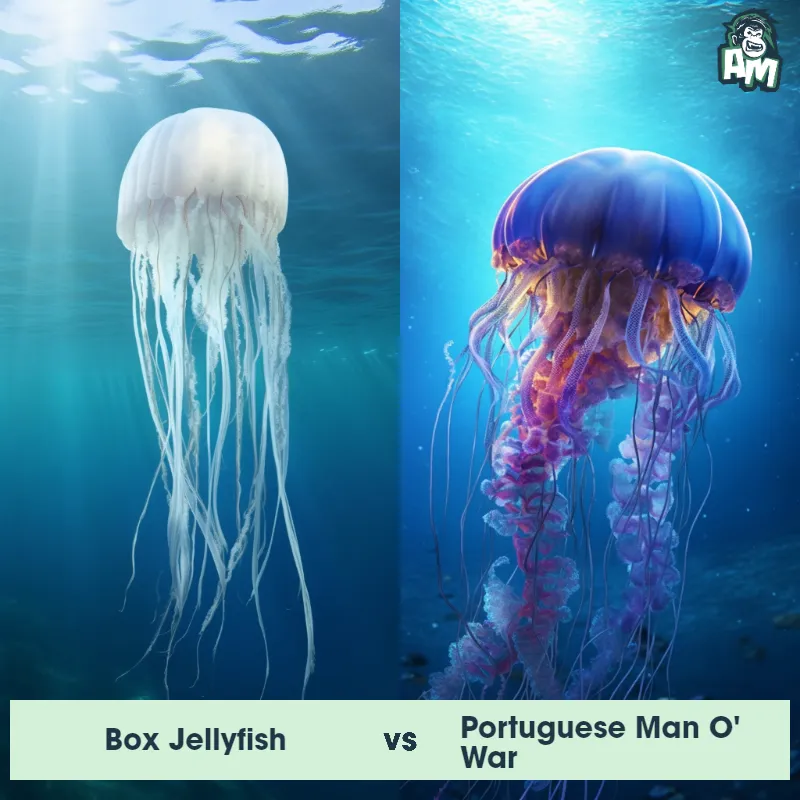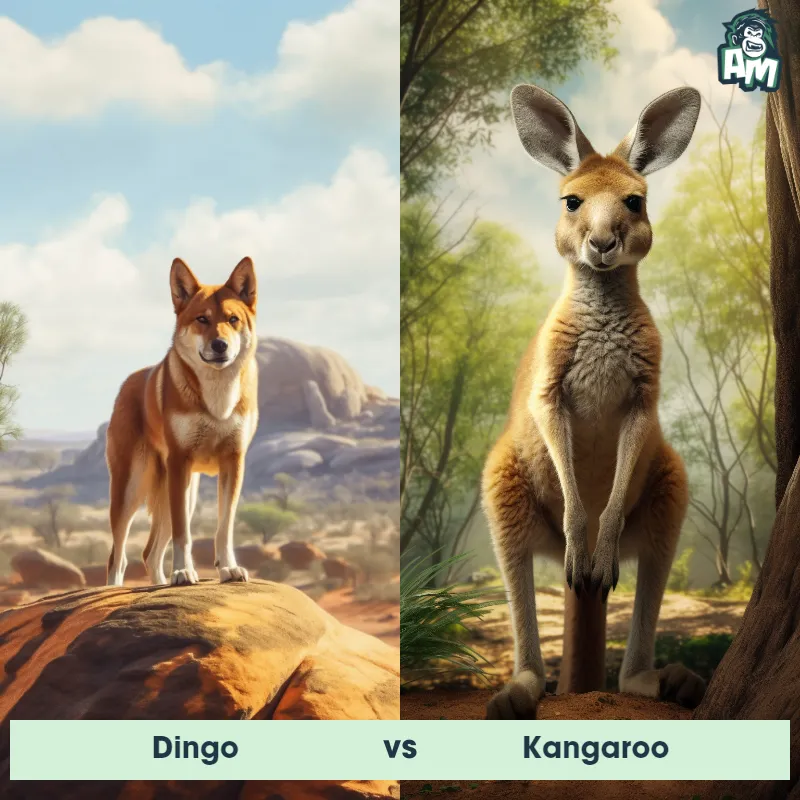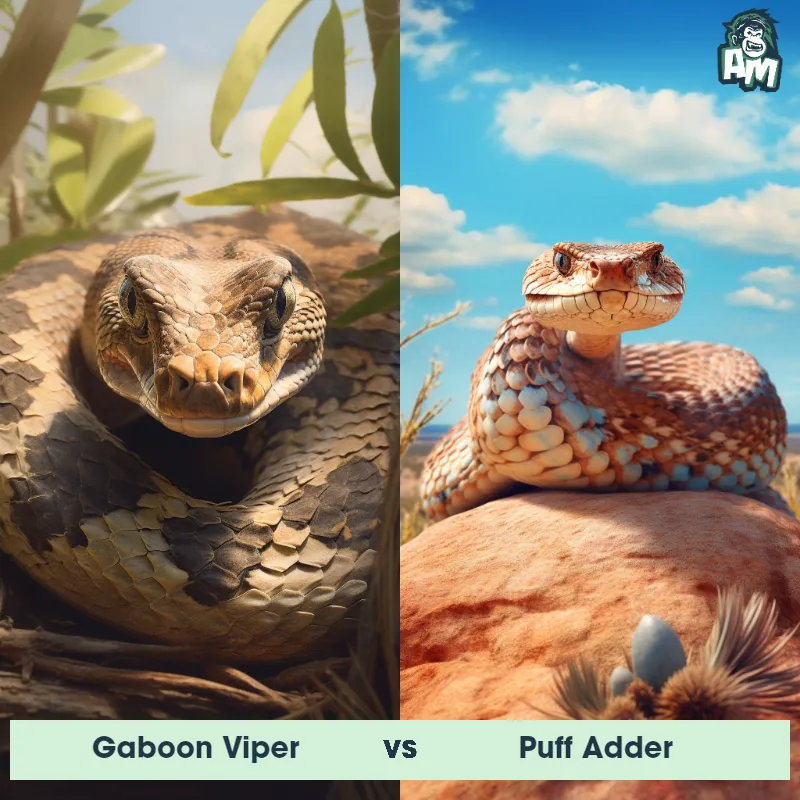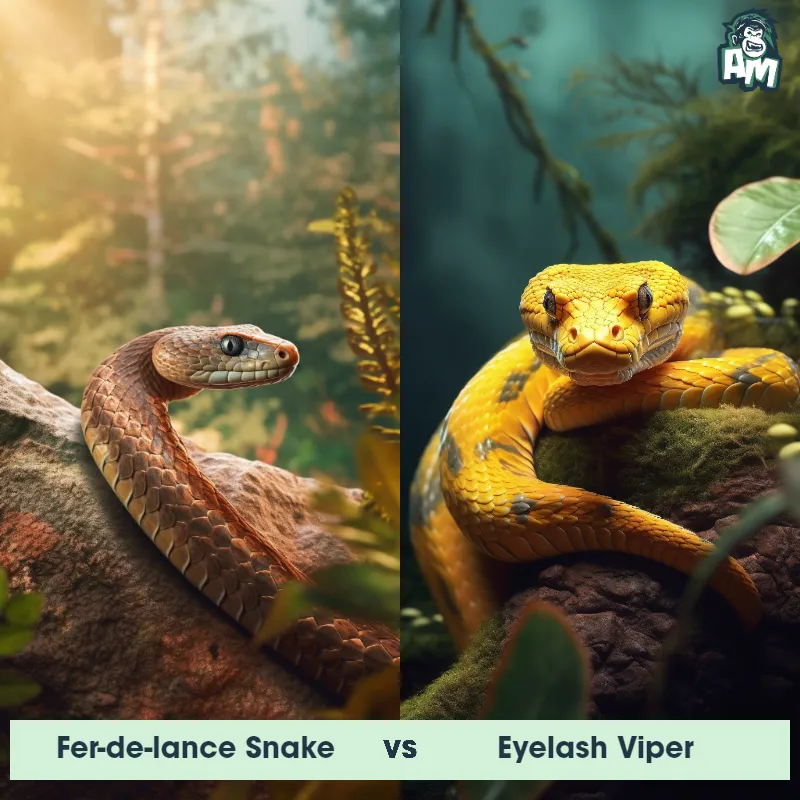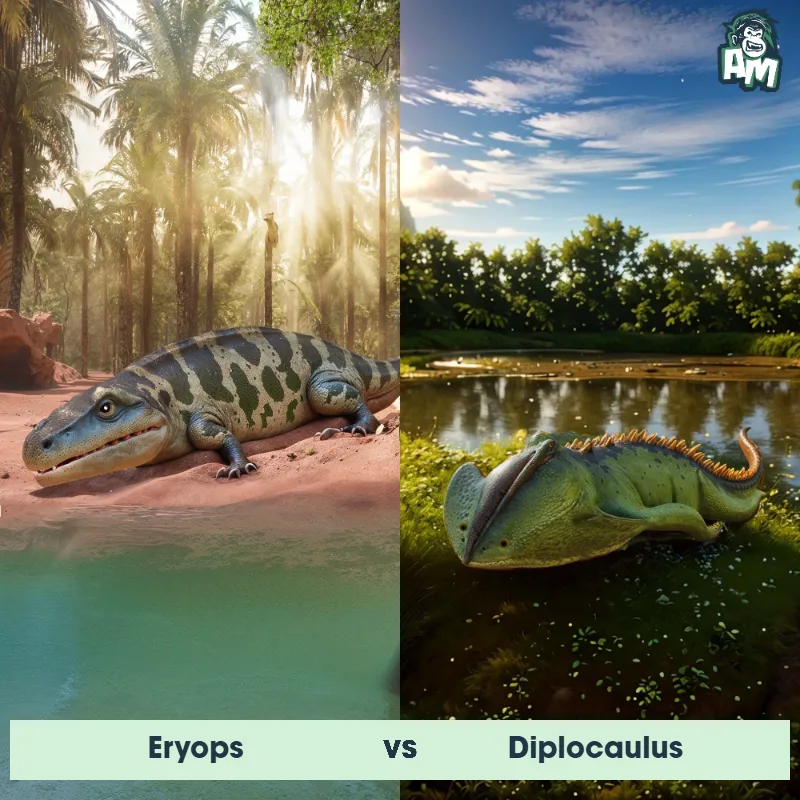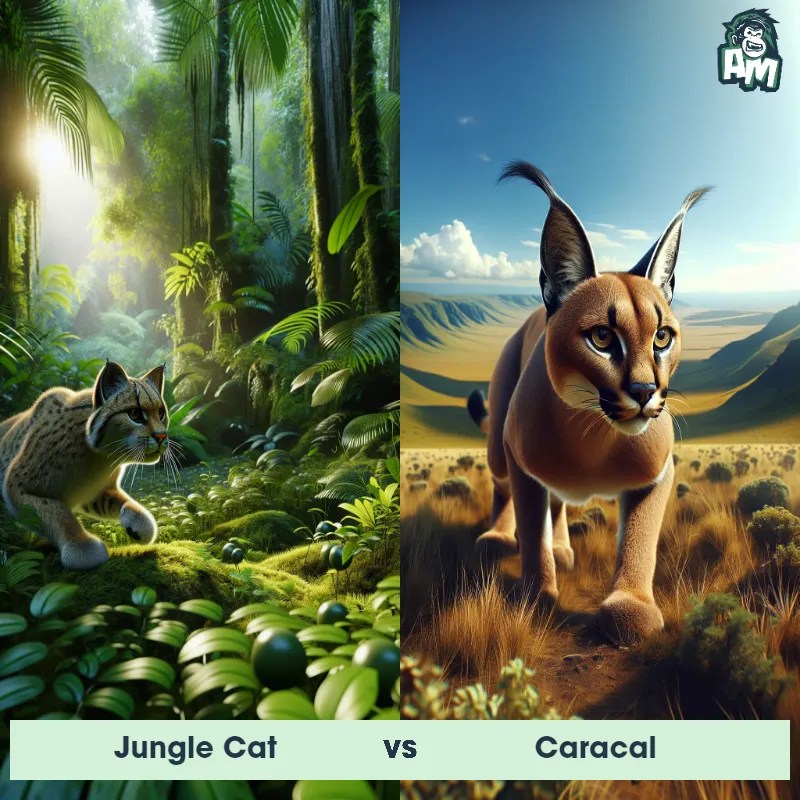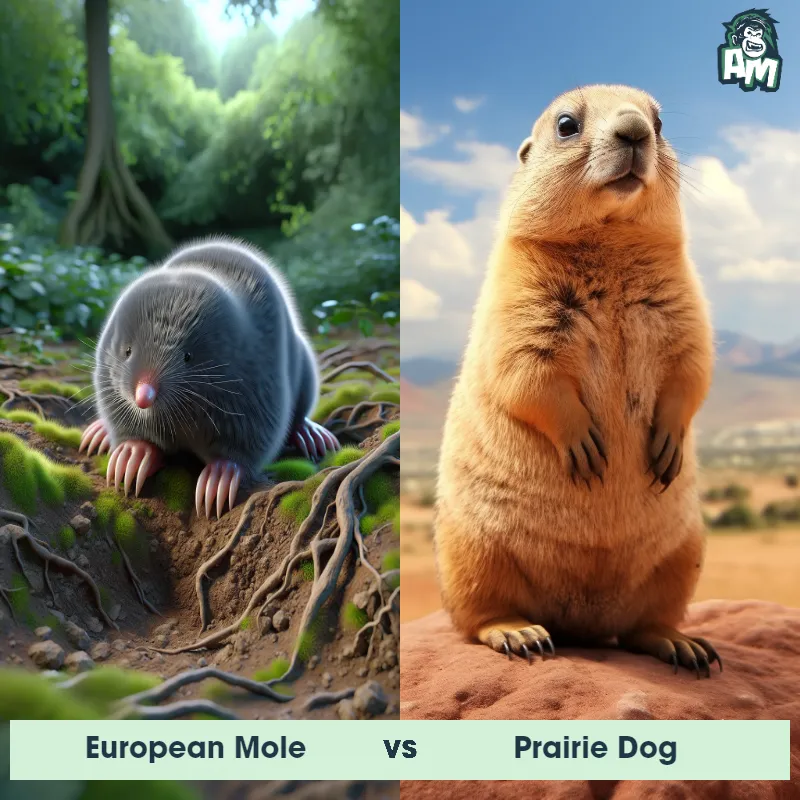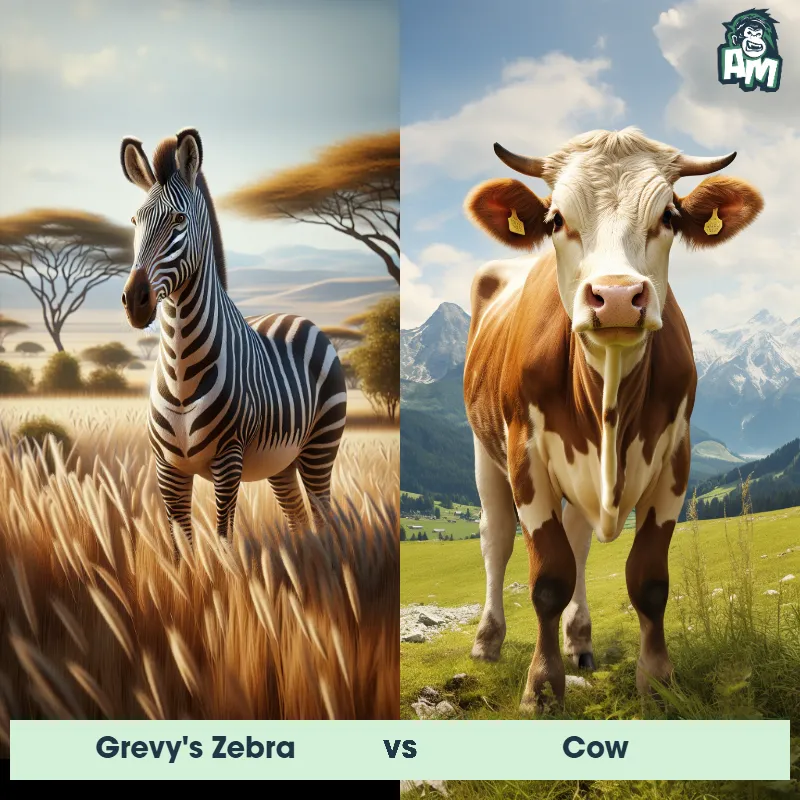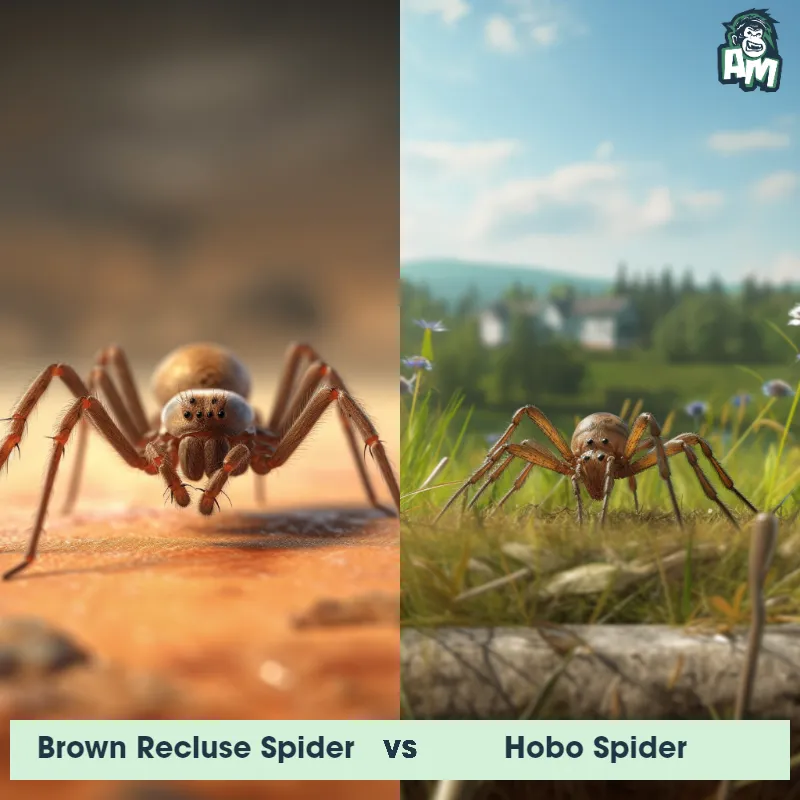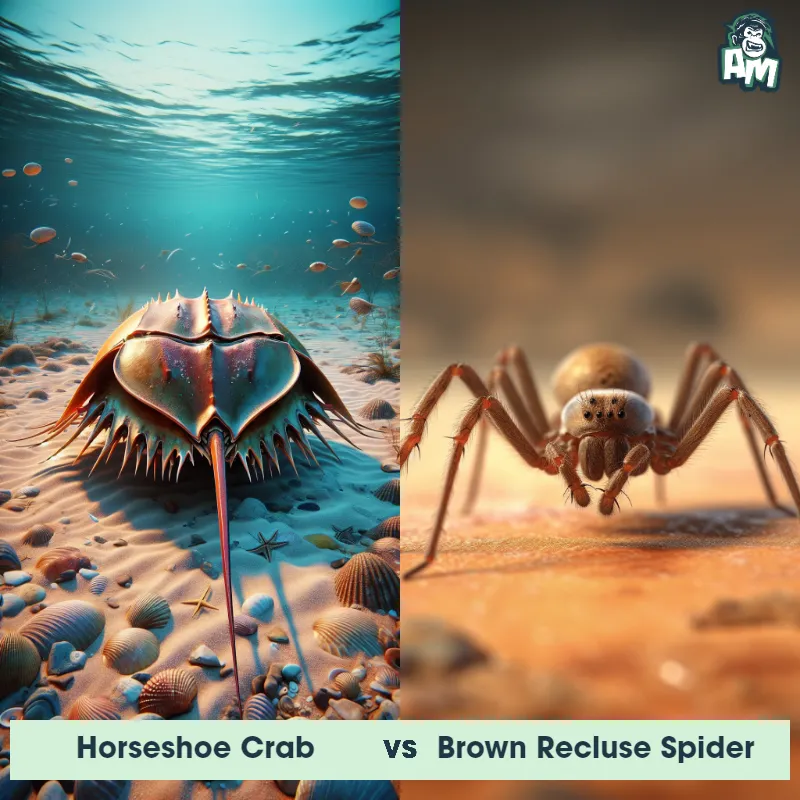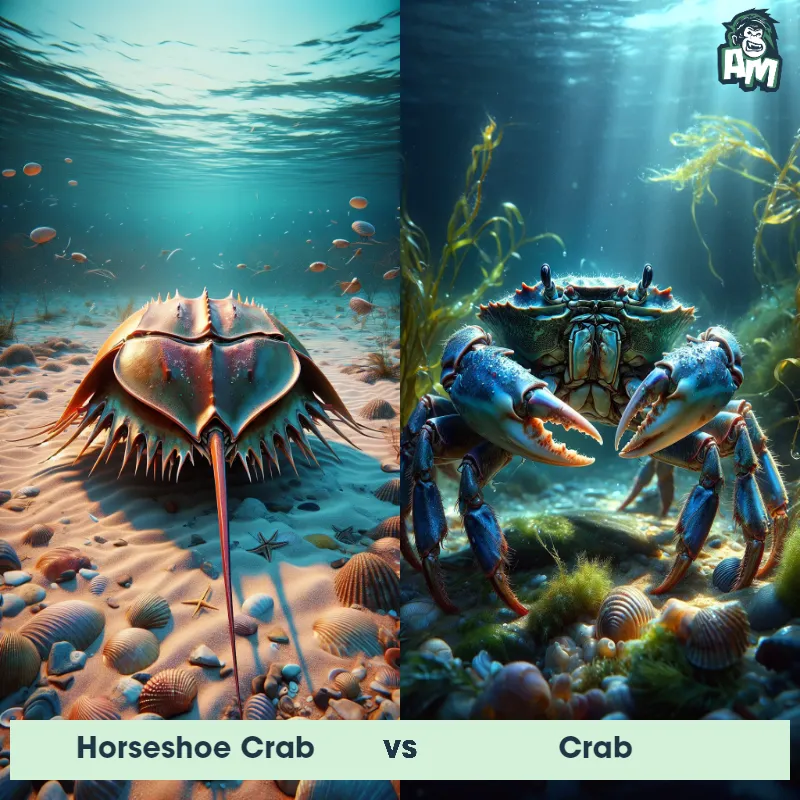Horseshoe Crab vs Hobo SpiderSee Who Wins
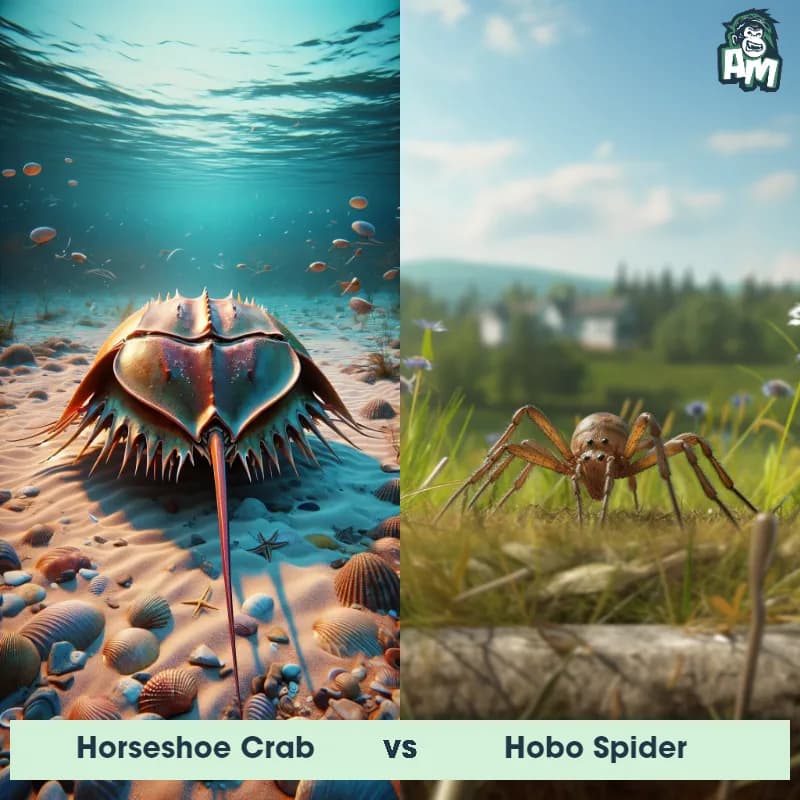
Welcome, ladies and gentlemen, to this intense matchup between a Horseshoe Crab and a Hobo Spider. Both of these creatures are known for their defenses and abilities to protect themselves. It's sure to be an interesting fight here tonight.
Contender 1: Horseshoe Crab
The Horseshoe Crab, scientifically known as Limulus polyphemus, is a unique marine creature found in coastal areas of the Atlantic Ocean. Despite its name, it is actually not a crab but belongs to a separate ancient lineage. Recognizable for its hard exoskeleton and horseshoe-shaped carapace, the Horseshoe Crab possesses an arthropod body structure with 10 legs, two large compound eyes, and a long, spiky tail. Its blood contains copper-based blue pigment, giving it a distinct blue color. Horseshoe Crabs mainly feed on mollusks, worms, and small crustaceans, using their long and sharp chelicerae to crush their prey.
Fun Fact: A fascinating fact about Horseshoe Crabs is that they are considered living fossils, with a lineage that can be traced back over 450 million years, making them older than dinosaurs!
Contender 2: Hobo Spider
The Hobo Spider, also known as the aggressive house spider, is a venomous spider found in the Pacific Northwest region of North America. They have a brownish color and a distinct pattern on their abdomen. They are known for their funnel-shaped webs and their aggressive behavior when threatened. Their venom can cause necrosis, but they are not considered a major threat to humans.
Fun Fact: The Hobo Spider is often mistaken for the Brown Recluse spider, but they are not found in the same geographic region and have different venom.
Matchup Stats
| Horseshoe Crab | Hobo Spider | |
|---|---|---|
| Size | 14-24 inches (35-61 centimeters) in length | 0.5-1.2 inches (1.3-3 cm) |
| Weight | 2-4 pounds (0.9-1.8 kilograms) | 0.01-0.03 ounces (0.3-0.8 grams) |
| Speed | 1 mph (1.6 km/h) | Speed: 0.03 mph (0.05 km/hr) |
| Key Strength | Exoskeleton provides protection and defense | Aggressive behavior when threatened |
| Biggest Weakness | Slow movement and limited mobility | Vulnerable to predators |
Current Votes
Horseshoe Crab vs Hobo Spider
See Who Wins
View More Matches
Looking For More?
Similar Matches
Scientific Stats
| Horseshoe Crab | Hobo Spider | |
|---|---|---|
| Scientific Name | Limulus polyphemus | Tegenaria agrestis |
| Family | Limulidae | Agelenidae |
| Habitat | Coastal areas of the Atlantic Ocean | Indoors and outdoors, prefers dry areas |
| Geography | Found in North America, primarily in the eastern coasts | Pacific Northwest region of North America |
| Diet | Mollusks, worms, and small crustaceans | Insects and other spiders |
| Lifespan | 17 years - 20 years | 1 year - 2 years |
Key Differences between Horseshoe Crab and Hobo Spider
- Leg structure: Horseshoe Crabs have long, spiny legs which help them move efficiently in the water, while Hobo Spiders have shorter, hairy legs adapted for hunting on land.
- Size: The Horseshoe Crab is significantly larger, with an average body length of 30 cm, while the Hobo Spider typically measures around 1 - 1.5 cm in body length.
- Coloration: The Horseshoe Crab has a hard shell that is brownish in color, while the Hobo Spider's abdomen is usually brown with a V-shaped marking on its back.
- Body shape: The Horseshoe Crab has a rounded horseshoe-shaped carapace, while the Hobo Spider has a more elongated body with a distinct waist.
- Behavior: Horseshoe Crabs are passive filter feeders that scavenge for food, while Hobo Spiders are active predators that hunt insects for their food source.
- Habitat: Horseshoe Crabs are primarily found in marine environments along sandy beaches, while Hobo Spiders prefer dark, moist areas such as basements and crawl spaces.




